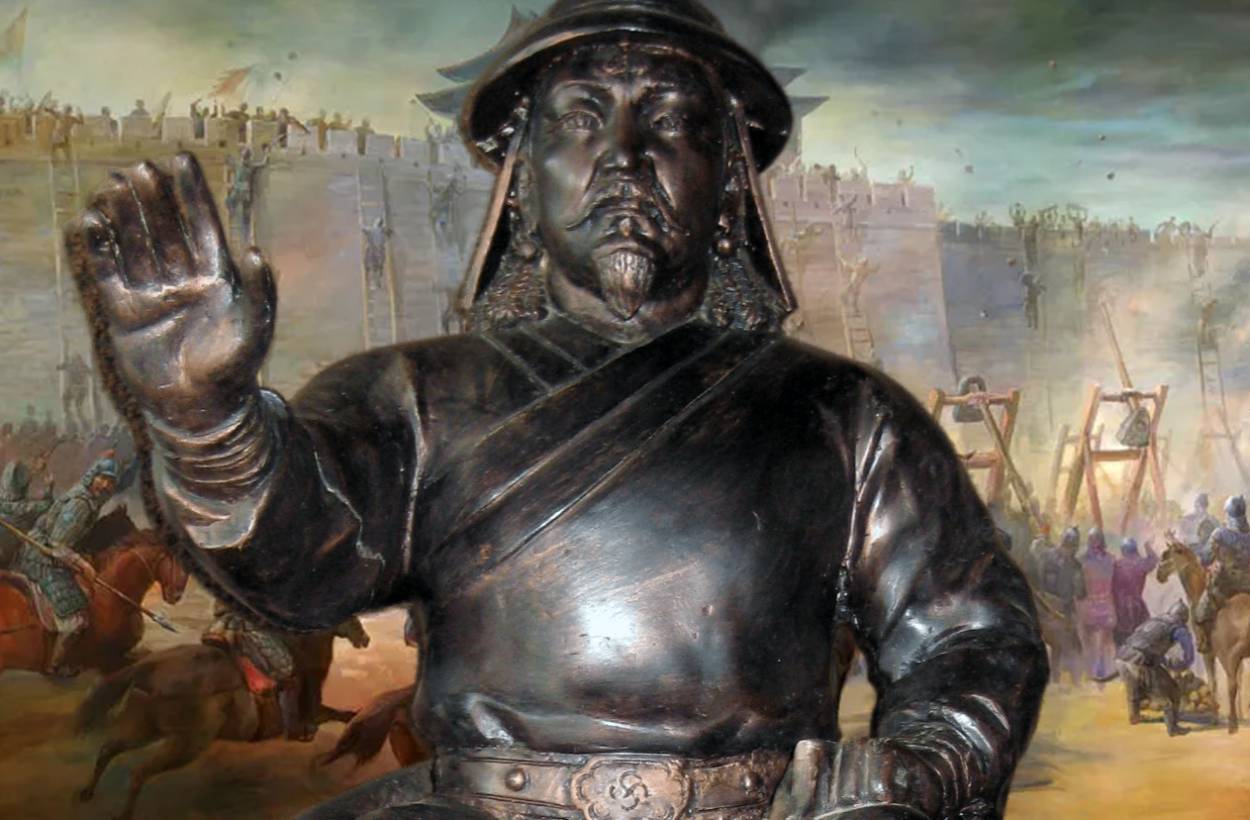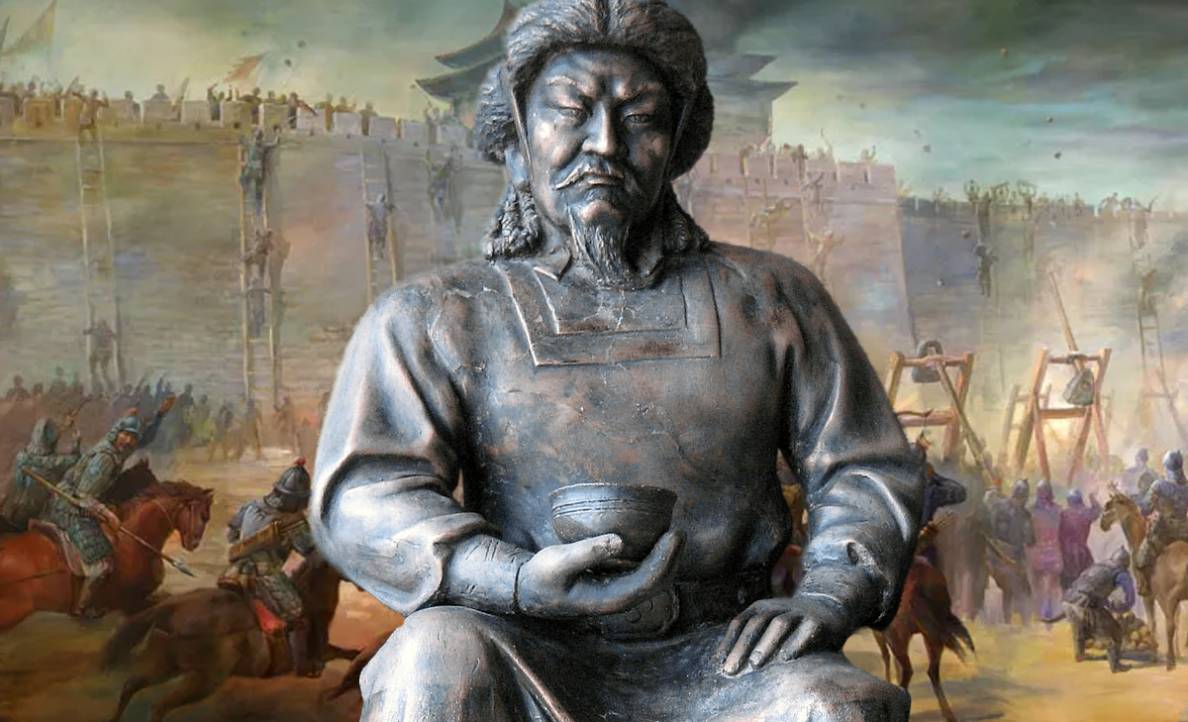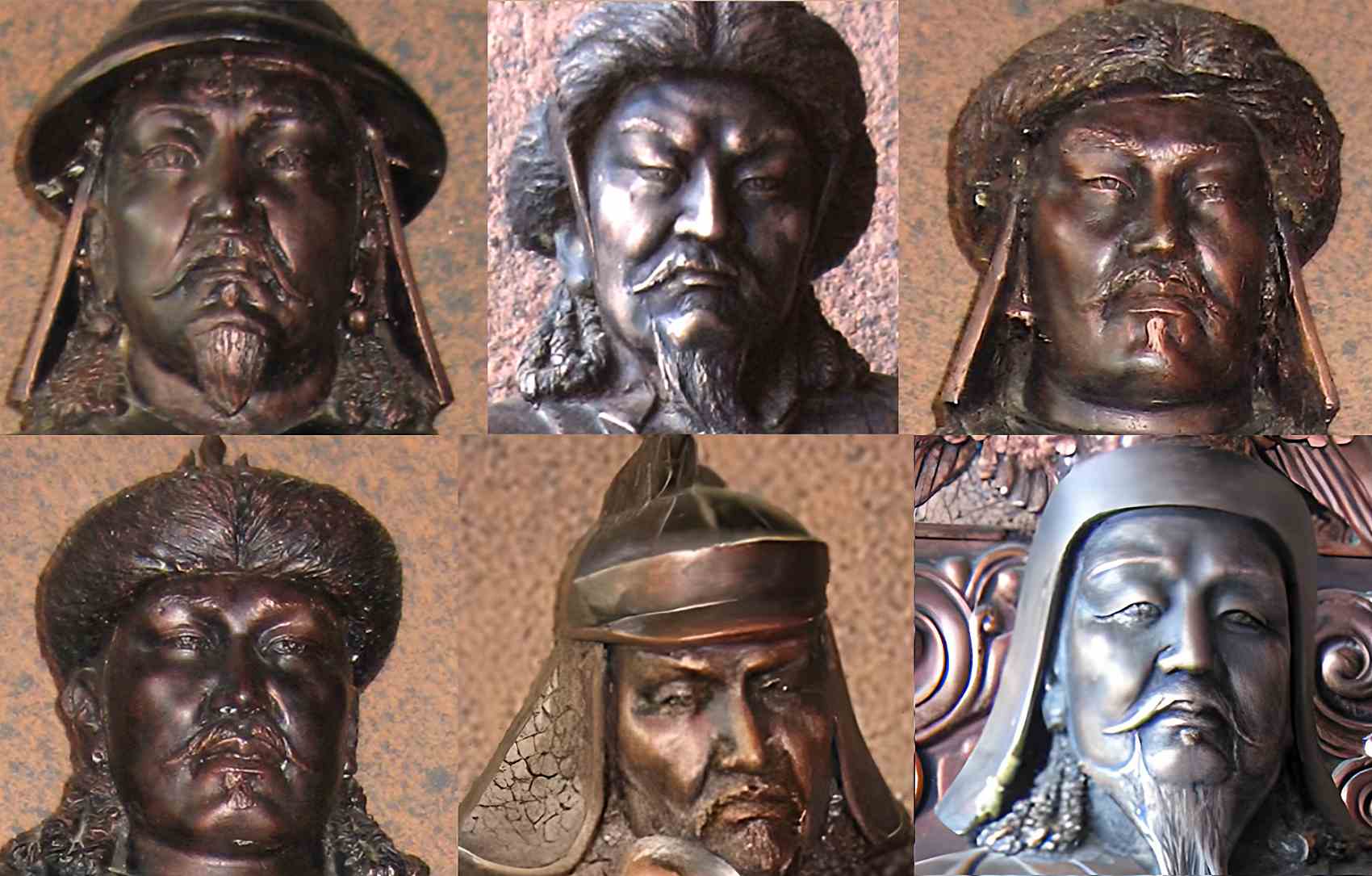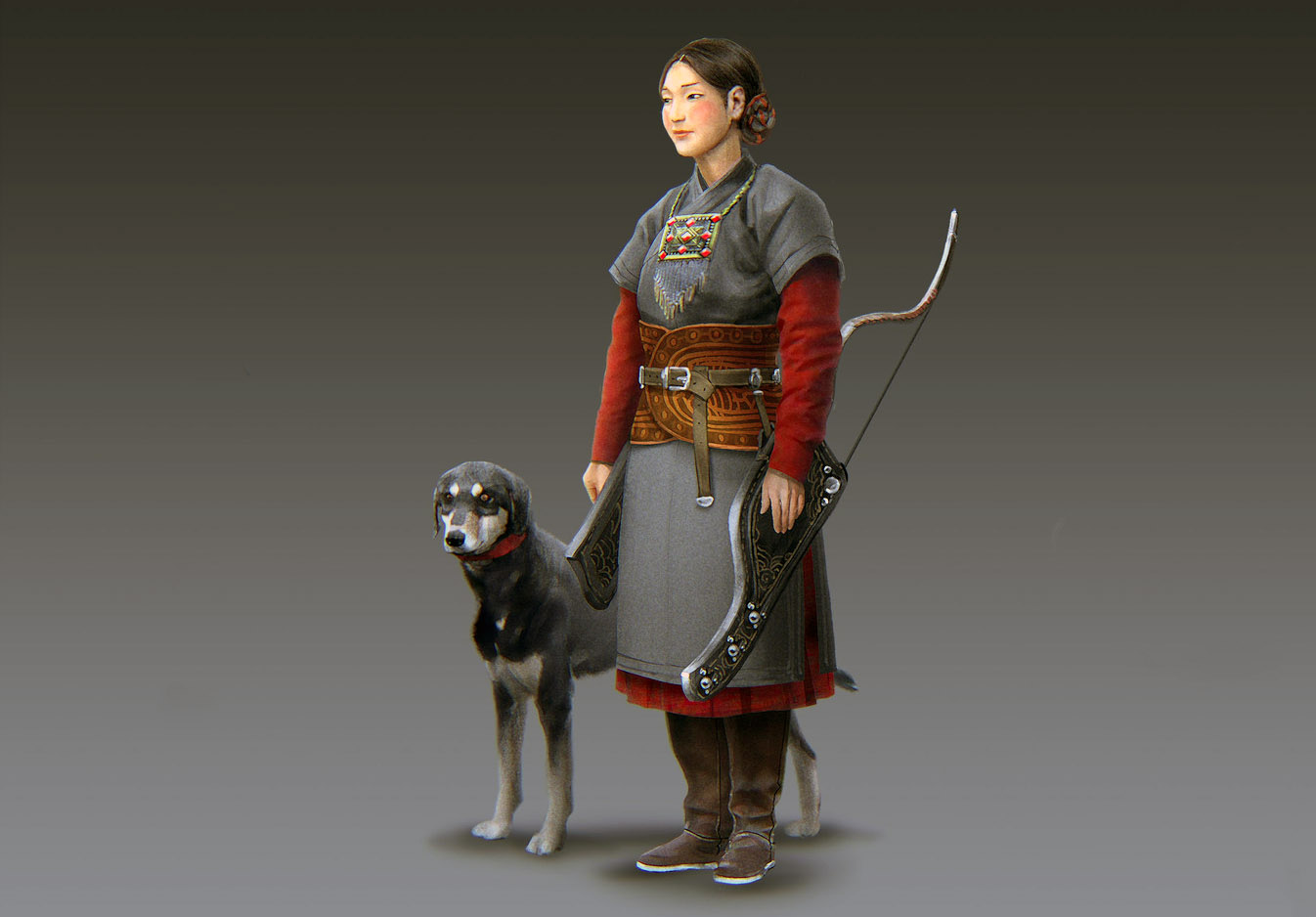Historical records of Genghis Khan’s children are incomplete, but Genghis did have at least 13 children: eight sons and five daughters. The tradition claims that Genghis Khan had a total of 120 children with his many concubines and wives. His nine children (four sons, and five daughters) were from his wife, Börte. Even though the exact number of Genghis Khan’s children remains uncertain, his four sons from Börte are particularly notable, with one being the father of Kublai Khan, the greatest successor of the Great Khan. Jochi was Genghis Khan’s first son, followed by Chagatai, Ögedei, and Tolui, all from the same mother, Börte. In addition, Genghis Khan had five daughters, and also four more sons from other concubines: his fifth son Wuluchi (Ulugci), the sixth son Kölgen (Kuoliejian), the seventh son Chawuer, and the eighth son Shuerche. Among them, Kölgen was a Mongol general.
Genghis Khan’s great harem
We also do know that Genghis Khan or Temujin had 44 documented wives and concubines (khatun), with more than 500 in total. They were mostly captives from the peoples and nations he conquered. There is a good chance that Genghis Khan is the historical figure with the widest spread of his ancestors throughout the globe.
Due to his numerous wives, Genghis Khan’s children is the ancestor of as many as 20 million males today, or around 0.5% of all men on the planet. His children make up around 8% of the Central Asian population. This is possible since there are 43 grandchildren in the third generation of his line. Even Genghis Khan was unsure of his family’s size. After all, he could have slept with women everywhere he traveled toward the west, and he had no say over who gave birth to his child.
The harem of Genghis Khan was enormous. Housing such a large number of people presents significant challenges. Genghis Khan had four distinct harems, which the Mongols referred to as the “Four Ordos,” so that he could better categorize his wives. These four magnificent Ordos were entrusted to Börte (Börte Üjin), Khulan, Yesui, and Yesugen, the four principal wives of Genghis Khan. Yesugen gave birth to Cha’ur who died before adulthood.
His spouses had ranks descending from great empress (khatun) to empress and concubine. All of Genghis’ wives, concubines, and children had their own yurts (households), which were overseen by the four queens. Börte Khatun, the first and greatest of the empresses, lived in the first yurt. Because Börte, the first wife of Genghis Khan, had the greatest rank among the four queens. Also, Genghis Khan fully acknowledged Börte’s four sons as his rightful heirs. With his other children, though, he was not as involved.
The official children of Genghis Khan

Despite his numerous offspring, Genghis Khan’s fertility was actually rather average. Genghis Khan’s five sons alone (including Kuoliejian) gave him 43 grandchildren. In 1226, Genghis Khan launched his last invasion of China, and on August 18th, 1227, he passed away. The Mongol Empire continued to grow under the leadership of Genghis Khan’s children. Every one of his four sons has created a sizable nation. His children and other descendants ruled an area that stretched from the coast of the China Sea to the European region of Russia.
- Genghis Khan’s daughters:
- Alakhai Bekhi (1191–1230)
- Checheikhen (died c. 1237)
- Alaltun
- Tümelün
- Qocin Beki (Huochenbieji)
- Genghis Khan’s sons:
- Jochi (1182–1227)
- Chagatai (1183–1242)
- Ögedei (1186–1241)
- Tolui (1191–1232)
- Ulugci (Wuluchi)
- Chawuer
- Kölgen (Kuoliejian)
- Shuerche
Genghis Khan’s eight sons
These four sons of Genghis Khan were all powerful figures in the Mongol Empire at the time, and they all had the same mother and were also the most famous of Genghis Khan’s children. Genghis Khan’s other alleged children, Kuoliejian, Wuluchi, Chawuer, and Shuerche, three of whom died young, all had different mothers. That is why they are mentioned less frequently in history. Genghis Khan favored Kuoliejian among his bastards, and he was blessed with four sons.
Jochi (1182–1227)

The eldest son, Jochi, born to Börte, was a prominent general in the Mongol Empire, known for his participation in battles to conquer the Jin State, Western Xia, and Central Asia. Lands in the western section of the Mongol Empire were allocated to Jochi as part of Genghis Khan’s tribute.
According to legend, Börte was not pregnant when she was taken away by the rival Merkit tribe. However, when Temujin, with the help of his tribe, sent troops to rescue Börte, she was already heavily pregnant. She later gave birth to Jochi.
If the Mongols had placed a high value on blood, they would not have married so many women from diverse cultures. For Genghis, a child would always be considered his own son as long as the child called him ‘daddy’. That’s why Genghis called the baby “Jochi” which means “guest” in Mongolian.
Among Temujin’s many sons, Jochi had the greatest battle achievements. But in 1222, Jochi stopped taking part in Genghis Khan’s wars. Genghis Khan believed that Jochi was intending to kill him, but during Temujin’s mobilization of troops, Jochi became critically ill and died at the age of 45.
After Genghis Khan’s western expedition, the hereditary territory of the Mongolian Khans of the Jochi line was established as the Jochi Khanate, also referred to as the Kipchak Khanate or Golden Horde (1242–1502). Jochi’s lands were split among his sons. His firstborn, Orda, established the White Horde, while his second, Batu, established the Golden Horde.
Jochi had a total of 14 sons: the eldest son Orda, the second son Batu, the third son Berke, the fourth son Berkhechir, the fifth son Shiban, the sixth son Tangad, the seventh son Teval, the eighth son Chilagun, the ninth son Sinqur, the tenth son Chimbay, the eleventh son Muhammed, the twelfth son Udur, the thirteenth son Tuqa-Timur, and the fourteenth son Shingum.
Chagatai (1183–1242)

Chagatai, also born to Börte and the second son of Genghis Khan, founded the Chagatai Khanate (1227–1363). After Genghis Khan died, Chagatai took over as the vassal emperor of Kashgaria and much of Transoxania (between the Amu and Syr Darya rivers).
Chagatai had 7 sons in total: the eldest, Mutukan, the second, Belgeshi, the third, Yesü Möngke, the fourth, Mochi Yebe, the fifth, Sarban, the sixth, Baidar, and the seventh, Baiju. The last four children were from his concubines.
Chagatai inherited the five modern-day nations in Central Asia. Also, Genghis Khan tasked him with seeing that his written code of law, the Yassa, was really put into practice. Chagatai was held in high regard for around 14 years as a fair and capable leader. Despite having many children, it was Qara Hülegü, his grandson, who took control after his death.
Ögedei (1186–1241)

Ögedei, the third son of Genghis Khan, was also born to Börte. He was supported and enthroned in 1229 AD to manage the entire Mongol Empire. Throughout his father’s rise to power, Ögedei was involved in a number of conflicts. When referring to himself, he was the first Mongol leader to use the title “khagan,” which means “great khan.” He married Töregene and was a key figure in the Mongol conquest of the Khwarazmian Empire.
Ögedei had seven sons in total: The eldest son Güyük, the second son Koden, the third son Köchü, the fourth son Qarachar, the fifth son Qashi, the sixth son Kadan, and the seventh son Melig.
He inherited his father’s mandate to expand the territory and went south to destroy the Jin Dynasty of North China, also sending his nephew, Batu Khan (1205–1255), the founder of the Golden Horde, to conquer Europe. During his reign, his territory expanded to include Central Asia, North China, and Eastern Europe. In 1271, Kublai Khan, the founder of the Yuan Dynasty, listed Ögedei as “Taizong” on his official record.
Tolui (1191–1232)

Mongol culture emphasized the need to keep the youngest child on the main base since he is not capable enough yet. Tolui, the fourth son of Genghis Khan and also born to Börte, stayed with his parents and inherited his father’s offices, pasture land, and army. When Ögedei succeeded to the throne and Tolui supervised the country. Kublai Khan, the greatest successor of Genghis Khan, was Tolui’s fourth child.
Tolui had a total of 11 sons: the eldest son Möngke Khan, the second son Kublai Khan, the third son Hulagu Khan, the fourth son Ariq Böke, the fifth son Qutuqtu, the sixth son El-Temür, the seventh son Jörike, the eighth son, Möge, the ninth son, Böchök, the tenth son, Sögetei, and the eleventh son, Sübügetei.
Tolui’s son Kublai posthumously bestowed upon him the title of Chinese emperor, though he never used it in his lifetime, even if he had never used the title of Khagan himself. His father’s sister-in-law Altani, saved Tolui from a Tatar who was ready to murder him when he was five. In 1213, Tolui and his brother-in-law Chiqu participated in their first battle against the Jin dynasty by storming the walls of Dexing.
Prior to his death, Genghis Khan designated his own son, Ögedei, as his successor. At the time of his passing in 1227, Genghis Khan commanded a formidable army of 129,000 soldiers. Upon his death, a portion of these troops, totaling 28,000, were distributed among his many siblings and children. The lion’s share of these soldiers, numbering over 100,000, were bequeathed to his youngest son, Tolui, a skilled military leader. Notably, this group also included the vast majority of the elite Mongolian cavalry.
Wuluchi (Ulugci)
It is likely that Wuluchi’s (or Ulugci’s) mother, a Tatar woman, was the khatun Yesui, one of Genghis Khan’s principal khatuns. Since she was a queen of Genghis, it is clear that Wuluchi did not have a particularly low social standing among Genghis Khan’s other sons. But he did not appear to be a general in the Mongol army, unlike Kölgen, another son of Genghis.
Chawuer
And Chawuer? Not much is known about him, either. However, Chawuer was born into a royal mother too; her mother was a queen of Genghis Khan, and she ranked fourth among the four queens that managed Genghis Khan’s great harems and the concubine yurts.
Kölgen (Kuoliejian)
Khulan was Kuoliejian’s (or Kölgen’s) mother; Khulan was second in rank only to Börte and accompanied Genghis Khan on one of his famous western expeditions. From a position of standing, Kuoliejian was not “nobody” as well. Kuoliejian was second only to Genghis Khan’s other sons from Börte. He later had four children, the oldest of whom was named Kucha. The identities of the other three are unknown. Kuoliejian was also known as Gelejian and Küregen.
Shuerche
For Shuerche, things were quite different. It is unknown who his mother was; however, she was a member of the medieval Naiman tribe, a notorious Genghis Khan adversary that Genghis first defeated in 1199 and later in 1203, ending their last khan.
Genghis Khan’s five daughters
Each of Genghis Khan’s known daughters married a prominent individual of the time. The candidates were hand-picked and were allies who declared their allegiance to Genghis Khan. The only fact known about Tümelün (one of Genghis’s daughters) is that she married her cousin Chigu, who was the son of Alchi, who was born to Teyin (Dei Seichen), Börte’s father.
There is also Tulgha, a lesser-known daughter of Genghis Khan, and she was allegedly conceived by Qulan Khatun. The Qarluqs took her as a wife.
Alakhai Bekhi (1191–1230)
Genghis Khan’s daughter from his first marriage to Börte, Alakhai Bekhi, was a powerful figure in the background of his rule and acted as a regent over the parts of China he conquered. To show his gratitude to the Ongud, one of Genghis Khan’s allies, Alakhai was engaged to an Ongud relative in 1206. Genghis Khan formed this alliance to further his conquests beyond the Gobi Desert.
Though her husband was killed during a revolt by the Ongud in 1211, Alakhai was able to escape and put down the uprising with the help of her father. She eventually married her stepson Jingue, and the two of them raised a child they called Negudei. Alakhai was well-known for her devotion to her family’s traditions, her interest in medical and holy books, her promotion of literacy, and her daily reading habit.
In the wake of Jingue’s death, she married another of her stepsons, Boyaohe, and saw to it that Boyaohe and his children were married off to members of the Borjigin Clan, the clan of Genghis Khan, so that they might further their own political interests.
Checheikhen (died c. 1237)
The marriage of Genghis Khan’s daughter Checheikhen to Torolchi, a descendant of the Oirat leader Khudugha Beki, took place in 1207 as part of a peace treaty between the Mongol leader and the Oirat tribe. It was through her marriage that Mongol hegemony was established over the northern trade routes, and the territories under her sisters’ control grew increasingly economically connected.
Sad to say, after Checheikhen’s death in 1237, her brother Ögedei Khan seized power in the Oirat territories and is suspected of having perpetrated acts of brutality against the Oirat people. Orghana was one of Checheikhen’s daughters; Oghul Qaimish could have been another.
Qocin Beki (Huochenbieji)
Qochin Beki (Bekhi or Begi) was supposedly the oldest of Genghis Khan’s daughters by Borte, but not much more is known about her. Genghis Khan gave Qocin Beki as a bride to the Ikires people, namely Butu Küregen. Butu was previously the husband of Genghis Khan’s sister Temulin until her death.
The Ikires were a branch of the Khongirads, one of the largest Mongol groups in the 1100s. It is often believed that the Khongirad people are descended from the long-vanished Wuku or Wugu people.
Alaltun
Genghis Khan had a daughter with an unnamed concubine; she was actually known as Il-Alti, Il-Altun, or Ile Khatun (Qatun), and the name “Alaltun” was a mistake in transcription. She was one of nine half-siblings, although four of them didn’t make it to adulthood.
After Genghis Khan had won the obedience and devotion of the Uyghur leader Barjuk Idi-Qut, he promised Il-Alti to him as a reward. However, the marriage never took place since Idi-Qut already had a main spouse and Il-Alti had passed away.
The promise was tried to be fulfilled by Il-Alti’s half-brother Ögedei, who became Khan after Genghis Khan’s death, but it was too late. Some say that Il-Alti was executed by Ögedei’s supporters because she poisoned Ögedei; others say that her execution was unfair and against Genghis Khan’s Yassa (law code).
Throughout the history of the Mongol Empire, Il-Alti stood out as both the leader of the Uyghurs and a heroic figure. Rashid al-Din, a Persian historian, claims that among Genghis Khan’s children, she was his favorite daughter.





